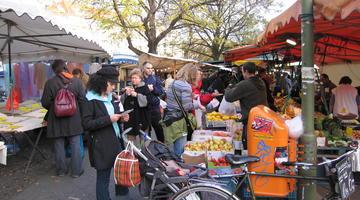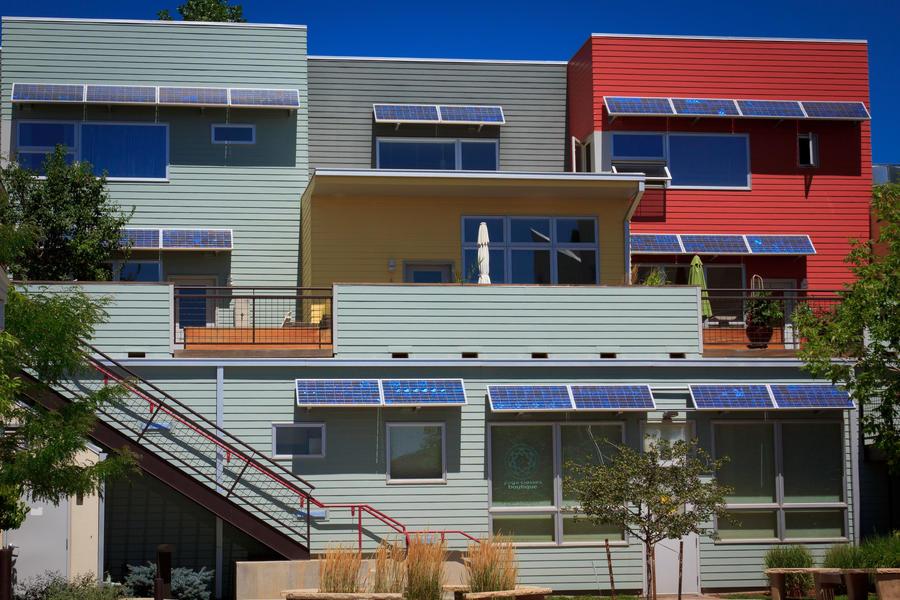
INCLU:DE
Just and inclusive climate action in German cities.
Cities' climate initiatives and ambitions need to be socially just and consider vulnerable populations, to...

Authors:
To expedite the renewable energy transition and reduce greenhouse gas emissions, many cities worldwide provide funding programs to assist residents - for instance in insulating their buildings or installing photovoltaics (PV) on their rooftops. However, how can they make sure that this redistribution of public tax money is done in an equitable manner? How can funding schemes be designed to ensure they benefit those who would not be able to afford them otherwise? How do they need to be communicated and promoted so that their reach goes beyond the “usual suspects”? These are the types of questions that the German cities of Heidelberg, Dortmund, Essen and Ludwigsburg grapple with as part of the INCLU:DE project.
When it comes to both building insulation and PV installation, homeownership is oftentimes a precondition to access such subsidy schemes. Acknowledging that many low-income households live in rental apartments and therefore are not homeowners, INCLU:DE cities are looking at subsidy schemes that are also suitable for tenants. From their perspective, these schemes hold the biggest potential in terms of an equitable distribution of municipal funds.
Plug-in solar devices for the win
Dortmund, Heidelberg and Ludwigsburg have honed in on their schemes for plug-in solar devices. Dubbed mini-PV systems, these can be mounted on balconies or exterior walls and simply plugged into existing power outlets. This way even tenants can become part of the renewable energy transition - an avenue that had previously been reserved for more privileged segments of society. These plug-in solar devices can lower electricity bills by 10-20%, which represents a particularly tangible benefit for economically-disadvantaged individuals and families.
All three cities, as well as their INCLU:DE peer Bonn, offer larger subsidies to underprivileged households in order to enhance their access to the scheme. Bonn reimburses up to 90% of their costs versus the 60% it offers other residents. Similarly, Dortmund covers up to 95% for social welfare recipients instead of the standard 50%. Heidelberg has settled on a flat-flee 50 EUR contribution from beneficiaries of their city-specific welfare program HeidelbergPass(+). Ludwigsburg has even gone a step further: After a sobering first year with only two applications for a plug-in solar device from low-income households, the city decided to turn their subsidy scheme into a ‘carefree package’. Now, beneficiaries of their welfare program LudwigsburgCard can simply indicate their interest online, and one of the city’s cooperation partners will take care of the installation, while liaising directly with the city for the payment. The revamped subsidy scheme is expected to remove additional barriers often faced by low-income households, particularly the need to cover costs up-front.
Significant challenges remain, however, in the quest to further enhance social equity outcomes. In the case of Dortmund, for example, there has been an unexpected rush of applications after the subsidy scheme was announced, with more than 500 applications received during the first week. This has rapidly depleted the allocated funding, which in turn created concern that the city was mostly able to reach and ultimately benefit better-resourced and well-off segments of society. Heidelberg and Ludwisgburg, on the other hand, require participation in their respective welfare programs as a prerequisite for eligibility for the subsidy schemes, yet not all those entitled to partake in the programs actually do so. Bonn is aiming to solve such a problem: The city council recently approved a resolution that will see the automatic distribution of their welfare program cards to eligible individuals. Clearly, there is a lot to learn from each other with respect to the design of the subsidy schemes, even though different regional regulations would need to be taken into account.
Cargo bikes for all?
Dortmund and Essen have additionally identified their cargo bike subsidy schemes as potentially advantageous for economically-marginalised residents. Dortmund’s subsidy is set to 75% for social welfare beneficiaries versus 45% for all others. However, here too, Dortmund’s funding pot was quickly depleted following the subsidy’s launch. While this is potentially great news from a climate protection perspective, it is less so from a social equity viewpoint.
Essen took instead a different road and is currently offering a reimbursement of up to 20% for all applicants, without differentiation of household income. This is due to uncertainties about whether the subsidy payments could potentially be counted as a source of income and hence negatively impact social welfare recipients - a finding worthy of further exploration. In this regard, Essen is keen to learn from INCLU:DE peer Dortmund, as well as other cities such as Stuttgart, Aachen, Brussels, and Washington D.C., all of which have either included a social component (higher funding for welfare recipients) or subsidies staggered by income level (the less you earn, the more you are subsidised).
Promoting subsidy schemes more equitably
Beyond designing their subsidy schemes in a more equitable manner, many INCLU:DE cities seek to tailor their communication and outreach strategies to ensure that they actually reach the economically-marginalised residents that their subsidy schemes target. For instance, they are planning to advertise their subsidy schemes at physical places that are often frequented by the target group, or to offer test rides on cargo bikes. Undoubtedly, the work with other city departments and relevant multipliers will be crucial in this endeavour. Only by gaining an understanding of the barriers and needs of their target beneficiaries, and identifying the right means for reaching them, will these cities be able to truly shape socially-equitable subsidy schemes.
We are using cookies, learn more on our data protection page.